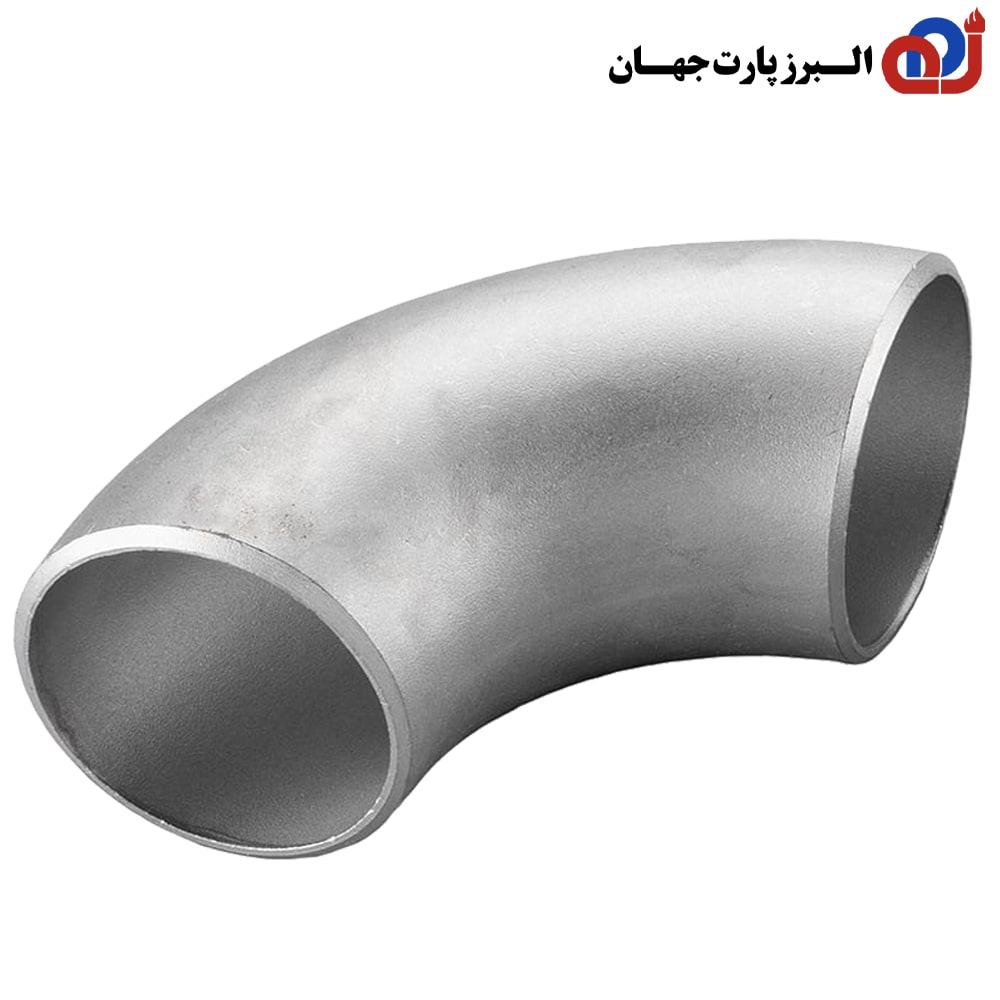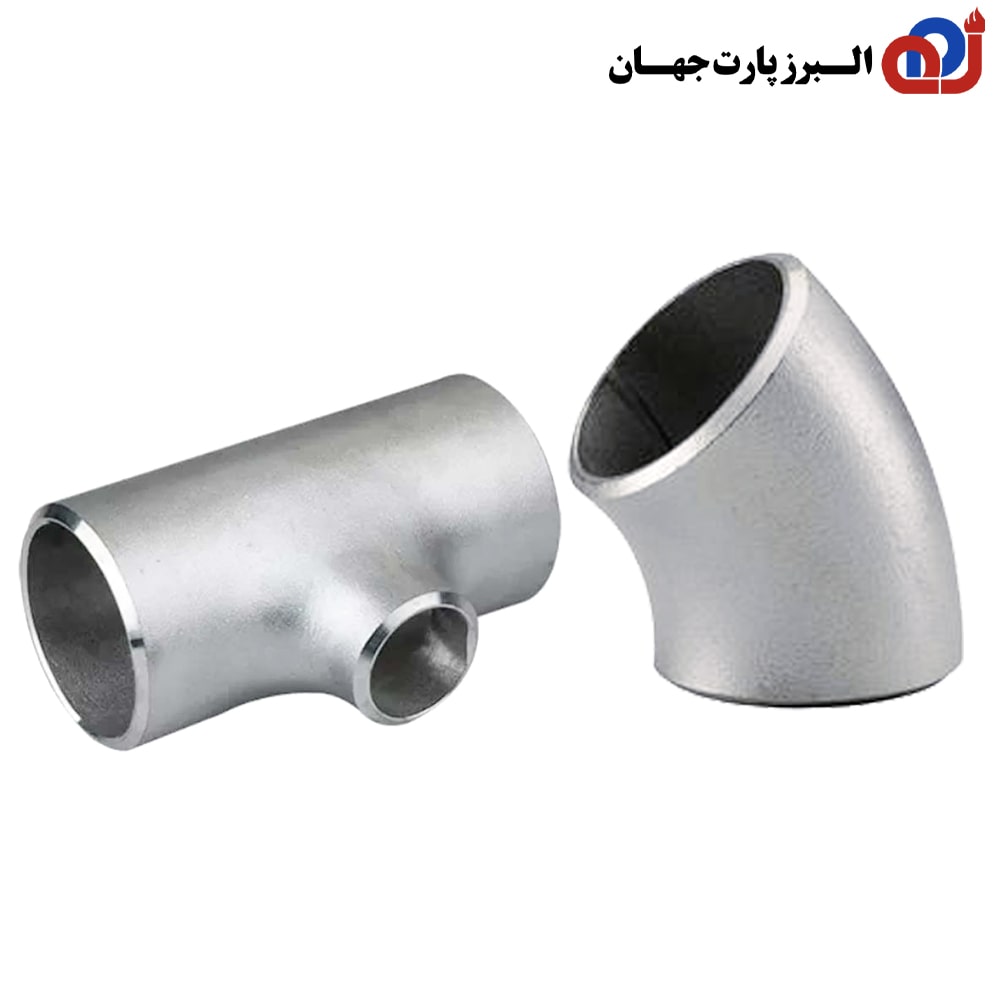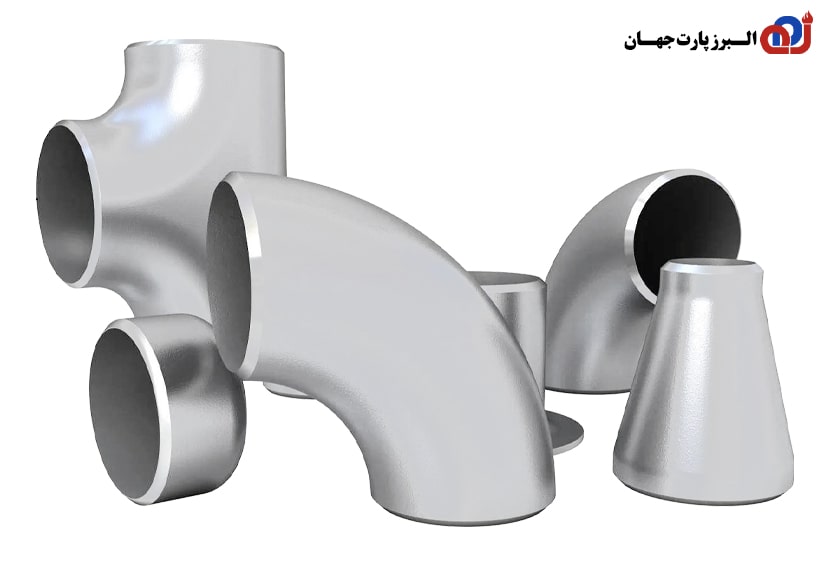
Butt weld welding includes different types of grooves that are used in the connection according to the thickness of the metal parts. Selecting the groove type and preparing it is also called “welding type and edge preparation”. This work becomes more important as the thickness of the metal edge increases; Because choosing the right type is very important in the beneficial effect of the connection and its continuity.
In butt welds, there is usually a gap between 2 and 3 mm. the distance between the edges and the weld; It must be carefully measured and designed. If this distance is too small or too large, it is considered a big defect in welding. Choosing the type of groove and the size of the weld according to the shape of the joint is selected from among the most widely used forms of welding, which are V, J, or U. Buttweld welding types are named with the same letters because of the related shape.
V: One sided twill weld
VV: double sided twill weld
a cone
double cone
U: One way
UU: Two-way
J: One way
JJ: Two-way
Horizontal butt weld
Square butt or flat: this butt welding method is the easiest welding method due to the alignment of the two surfaces. This method is usually used to weld two thin surfaces to each other. Thin surfaces are usually simply welded without the need for weld design and preparation.
Combined: This method means using two or more butt welding methods at the same time. The combined method is also usually used to increase stability.
Also, the design of the welding type and its selection changes according to the volume of penetration. Choosing the welding method to prevent bending and curvature should be done correctly. In all buttweld welding methods, the welds are coordinated with the thickness of the metal edge. Welding implementation methods are done with three methods: manual, mechanized and automatic.
From the methods of butt welding joints, we can briefly mention the use of electric butt welding designs, resistance, use of beam for butt welding and soldering.
How to make butt weld connections

To perform butt weld welding, after choosing the welding method or its design, the edges of the parts to be welded must be kept together using an adhesive weld. In the first step, keeping them fixed happens, which is obvious and necessary. This type of connection is a temporary connection that forms the alignment of the parts, and during the welding operation, the parts will be ready to face each other. Sometimes it may be necessary to heat the welding edge before connecting the parts.
After these introductions, only the butt weld implementation is done. As mentioned earlier, due to its efficiency, this type of welding is usually used in various sectors of the industry (such as piping systems, automobiles, energy, power, etc.). Butt welding is a basic technique that is used for different thicknesses due to its flexibility in different shapes.

Butt weld connection means a connection that is butt-welded and is one of the simplest and most widely used connections in the category of welded connections used in the piping industry.
What is butt weld or butt welding?
Buttweld connection means the connection established between the end or edge of two parts, which forms an angle between 135 and 180 degrees between the two connected areas.
The role of butt weld welding in the piping industry is very colorful. This type of connection is done by putting two pieces of metal together and welding them; so that in the butt connection, these two parts are on the same level; Therefore, the corroded parts are placed almost parallel and, unlike other connections, they do not overlap and do not overlap. However, they are designed and manufactured to be easily and accurately connected to the desired equipment and have a long lifespan. These connections are used in cases such as changing the piping direction, changing the pipe size, branching, blocking the network, etc.
Welded joints are one of the most important factors for transferring and other matters related to fluids such as oil and gas, steam, sensitive chemical products, etc. These connections, as mentioned, play a significant role in the piping system with high sensitivity, especially in important industries, and in short or long routes, they are part of the system itself.
Among the advantages of this type of connection, the following can be mentioned:
Edge-to-edge welds or butt welds create a strong connection; so that a correct connection has a very low error rate and rarely encounters leakage;
Due to the flush connection, this type of connection maintains the flow pressure in a more stabilized state;
This type of connection does not require continuous handling in short periods;
Compared to other connections, it weighs less;
Due to the use of less equipment, the fittings are much lighter and usually save money;
having high strength, density and freedom of action in the design of connections;
control and prevent bending and bending;
easy handling and inspection;
It is much easier to implement butt welding joints than other methods.
However, these types of connections can also have disadvantages; The geometry and shape of the welds limits their application. Sometimes these connections need support or stabilizers. They may also show sensitivity to surface conditions. These connections are used in the consumption and transfer of fluids, gases and chemical and construction materials; They also play a very important role in the construction industry, especially motor homes. These welded joints are widely used in systems related to energy and petrochemical industries, exploration and production, transmission and storage, distribution and consumption of fossil and nuclear fuel power plants, food and beverage industries, etc. They have This is why considering its disadvantages, it is possible to consider more advantages and prioritize its use.
Types of buttweld connections

Butt weld welding includes different types of grooves that are used in the connection according to the thickness of the metal parts. Selecting the groove type and preparing it is also called “welding type and edge preparation”. This work becomes more important as the thickness of the metal edge increases; Because choosing the right type is very important in the beneficial effect of the connection and its continuity.
In butt welds, there is usually a gap between 2 and 3 mm. the distance between the edges and the weld; It must be carefully measured and designed. If this distance is too small or too large, it is considered a big defect in welding. Choosing the type of groove and the size of the weld according to the shape of the joint is selected from among the most widely used forms of welding, which are V, J, or U. Buttweld welding types are named with the same letters because of the related shape.
V: One sided twill weld
VV: double sided twill weld
a cone
double cone
U: One way
UU: Two-way
J: One way
JJ: Two-way
Horizontal butt weld
Square butt or flat: this butt welding method is the easiest welding method due to the alignment of the two surfaces. This method is usually used to weld two thin surfaces to each other. Thin surfaces are usually simply welded without the need for weld design and preparation.
Combined: This method means using two or more butt welding methods at the same time. The combined method is also usually used to increase stability.
Also, the design of the welding type and its selection changes according to the volume of penetration. Choosing the welding method to prevent bending and curvature should be done correctly. In all buttweld welding methods, the welds are coordinated with the thickness of the metal edge. Welding implementation methods are done with three methods: manual, mechanized and automatic.
From the methods of butt welding joints, we can briefly mention the use of electric butt welding designs, resistance, use of beam for butt welding and soldering.
How to make butt weld connections

To perform butt weld welding, after choosing the welding method or its design, the edges of the parts to be welded must be kept together using an adhesive weld. In the first step, keeping them fixed happens, which is obvious and necessary. This type of connection is a temporary connection that forms the alignment of the parts, and during the welding operation, the parts will be ready to face each other. Sometimes it may be necessary to heat the welding edge before connecting the parts.
After these introductions, only the butt weld implementation is done. As mentioned earlier, due to its efficiency, this type of welding is usually used in various sectors of the industry (such as piping systems, automobiles, energy, power, etc.). Butt welding is a basic technique that is used for different thicknesses due to its flexibility in different shapes.
Etisalat has a fundamental and widely used role in the world of industry and related equipment. These connections are connected to other equipment in different ways and complete the process of structures. Also, the type and type of connection has a direct relationship with the choice of methods for connection.

Butt weld connection means a connection that is butt-welded and is one of the simplest and most widely used connections in the category of welded connections used in the piping industry.
What is butt weld or butt welding?
Buttweld connection means the connection established between the end or edge of two parts, which forms an angle between 135 and 180 degrees between the two connected areas.
The role of butt weld welding in the piping industry is very colorful. This type of connection is done by putting two pieces of metal together and welding them; so that in the butt connection, these two parts are on the same level; Therefore, the corroded parts are placed almost parallel and, unlike other connections, they do not overlap and do not overlap. However, they are designed and manufactured to be easily and accurately connected to the desired equipment and have a long lifespan. These connections are used in cases such as changing the piping direction, changing the pipe size, branching, blocking the network, etc.
Welded joints are one of the most important factors for transferring and other matters related to fluids such as oil and gas, steam, sensitive chemical products, etc. These connections, as mentioned, play a significant role in the piping system with high sensitivity, especially in important industries, and in short or long routes, they are part of the system itself.
Among the advantages of this type of connection, the following can be mentioned:
Edge-to-edge welds or butt welds create a strong connection; so that a correct connection has a very low error rate and rarely encounters leakage;
Due to the flush connection, this type of connection maintains the flow pressure in a more stabilized state;
This type of connection does not require continuous handling in short periods;
Compared to other connections, it weighs less;
Due to the use of less equipment, the fittings are much lighter and usually save money;
having high strength, density and freedom of action in the design of connections;
control and prevent bending and bending;
easy handling and inspection;
It is much easier to implement butt welding joints than other methods.
However, these types of connections can also have disadvantages; The geometry and shape of the welds limits their application. Sometimes these connections need support or stabilizers. They may also show sensitivity to surface conditions. These connections are used in the consumption and transfer of fluids, gases and chemical and construction materials; They also play a very important role in the construction industry, especially motor homes. These welded joints are widely used in systems related to energy and petrochemical industries, exploration and production, transmission and storage, distribution and consumption of fossil and nuclear fuel power plants, food and beverage industries, etc. They have This is why considering its disadvantages, it is possible to consider more advantages and prioritize its use.
Types of buttweld connections

Butt weld welding includes different types of grooves that are used in the connection according to the thickness of the metal parts. Selecting the groove type and preparing it is also called “welding type and edge preparation”. This work becomes more important as the thickness of the metal edge increases; Because choosing the right type is very important in the beneficial effect of the connection and its continuity.
In butt welds, there is usually a gap between 2 and 3 mm. the distance between the edges and the weld; It must be carefully measured and designed. If this distance is too small or too large, it is considered a big defect in welding. Choosing the type of groove and the size of the weld according to the shape of the joint is selected from among the most widely used forms of welding, which are V, J, or U. Buttweld welding types are named with the same letters because of the related shape.
V: One sided twill weld
VV: double sided twill weld
a cone
double cone
U: One way
UU: Two-way
J: One way
JJ: Two-way
Horizontal butt weld
Square butt or flat: this butt welding method is the easiest welding method due to the alignment of the two surfaces. This method is usually used to weld two thin surfaces to each other. Thin surfaces are usually simply welded without the need for weld design and preparation.
Combined: This method means using two or more butt welding methods at the same time. The combined method is also usually used to increase stability.
Also, the design of the welding type and its selection changes according to the volume of penetration. Choosing the welding method to prevent bending and curvature should be done correctly. In all buttweld welding methods, the welds are coordinated with the thickness of the metal edge. Welding implementation methods are done with three methods: manual, mechanized and automatic.
From the methods of butt welding joints, we can briefly mention the use of electric butt welding designs, resistance, use of beam for butt welding and soldering.
How to make butt weld connections

To perform butt weld welding, after choosing the welding method or its design, the edges of the parts to be welded must be kept together using an adhesive weld. In the first step, keeping them fixed happens, which is obvious and necessary. This type of connection is a temporary connection that forms the alignment of the parts, and during the welding operation, the parts will be ready to face each other. Sometimes it may be necessary to heat the welding edge before connecting the parts.
After these introductions, only the butt weld implementation is done. As mentioned earlier, due to its efficiency, this type of welding is usually used in various sectors of the industry (such as piping systems, automobiles, energy, power, etc.). Butt welding is a basic technique that is used for different thicknesses due to its flexibility in different shapes.

